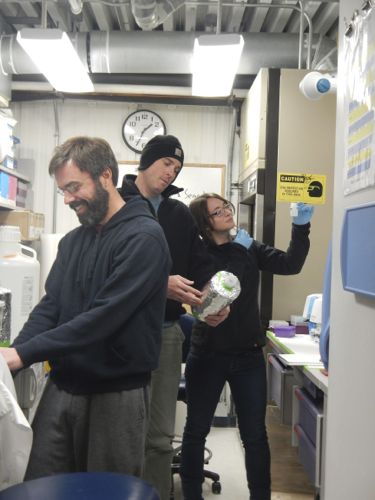
Microbes! These little guys are way more interesting than you might imagine. First of all, they are the most diverse organisms on the planet. By far! When you look at the evolutionary tree of life, they are just about everywhere (see the tree below). We are covered in microbes - it is estimated that we have 10-100 TRILLION living on us. We have more microbes on us than cells in us, like about 10 times more. By the way, a microbe is a microorganism. But you knew that already, didn't you? They aren't all gross. We eat them and use them in agriculture and food processing - yogurt, cheese, beans, bread, wine, CHOCOLATE. Microbes also play an important role in ecosystems. They recycle and breakdown compounds into pieces that can be used in other ways - oxygen, carbon, nitrogen. Guess which of these elements we are going to talk about today? Yep, Carbon. Microbes are a critical piece in the carbon cycle.

Today I want to tell you about the research of Jeremy Rich (from Brown University) and his team on station - Sean O'Neil and Madie Willis. They are studying Seasonal Succession of Microbial Communities. In other words, how the diversity of microbes in the waters down here changes from season to season. They are down here at Palmer but collaborate with Linda Amaral-Zettler, Cat Luria, and Hugh Ducklow.

What is known is that surprisingly, there is more diversity of microbial species in the winter in these cold waters than in the Antarctic summer. Palmer Station is a logical place to study this because of the more rapid rate of climate change down here. Some of the specific changes that have been documented down here because of warming are… the penguin population, for one. The more ice-dependent penguins that used to be numerous around here like the Emperor and Adelie penguins have moved further south. You now see Gentoo and Chinstrap penguins in higher numbers. There have been big changes in the krill populations. Krill are small crustaceans that are the food source of many in the sea – including whales. And, finally, changes in the zooplankton and phytoplankton communities. PlanktonPlankton are small or microscopic organisms that float or drift in fresh or salt water, especially at or near the surface, and serve as food for fish and other larger organisms. are basically any small organism in the water that is forced to go with the flow as in they have no real means to go against a current. If you look at the word roots you should be able to figure out which is animal based and which is plant based. Small larval creatures that will grow into larger animals in the sea fall into this group. But back to our topic… Over the next few months, Jeremy’s team, as in Sean and Madie, will be sampling water once a week and analyzing the species of microbes and calculating the growth rate.

The working hypothesis for this research is that these changes are driven by the phytoplankton blooms in the spring and early summer. Two cool things about the research (even though what I’m telling you is just the tip of the iceberg…so to speak) – First, the flow cytometer. The other is the radioactive amino acid they will use. I’ll talk about these tomorrow because this is pretty long already! So to end, because marine microbes are such an important part of the global carbon cycle and because there is still so much to learn about their diversity and life cycles, this project offers an opportunity to improve our understanding of winter microbial communities, what is influencing their changing seasonal populations, and offer a deeper understanding of climate change and warming. These microbes have never really been monitored and studied in the winter months so it should be exciting – from a microorganism point of view. Who knows, many they will discover some new species.



Comments